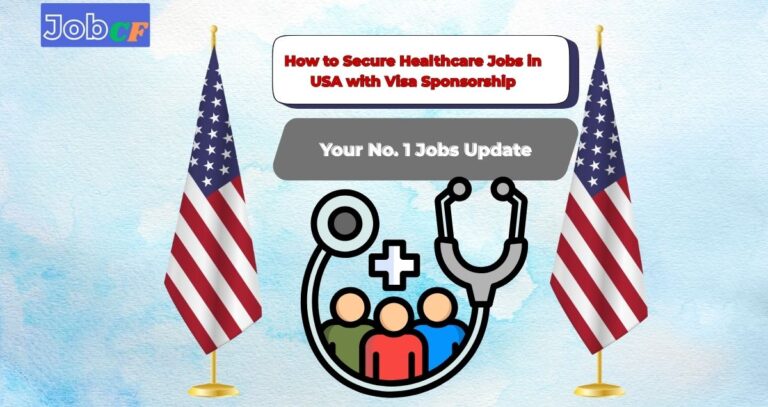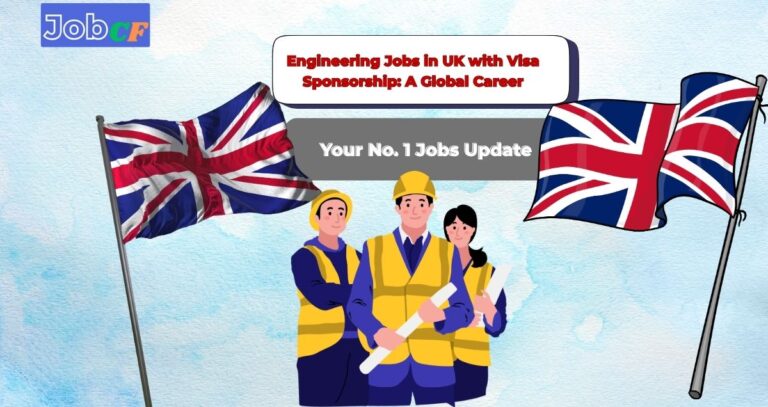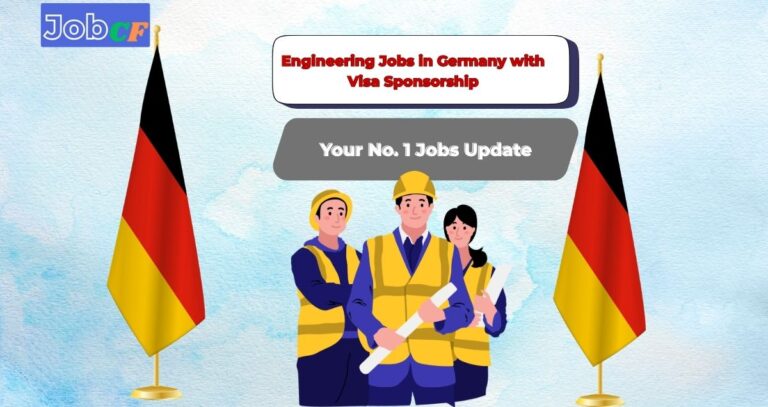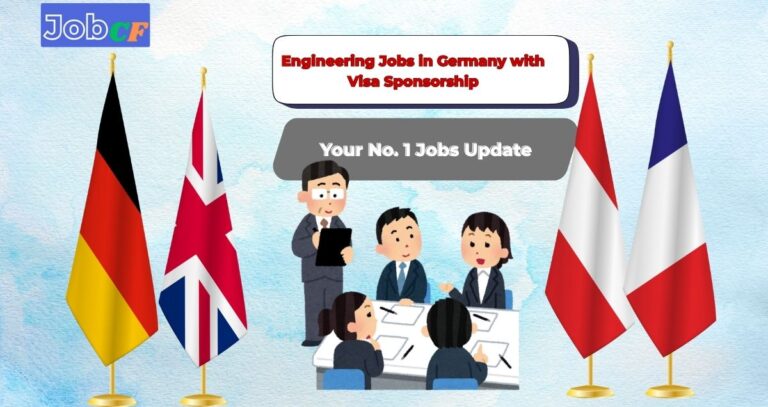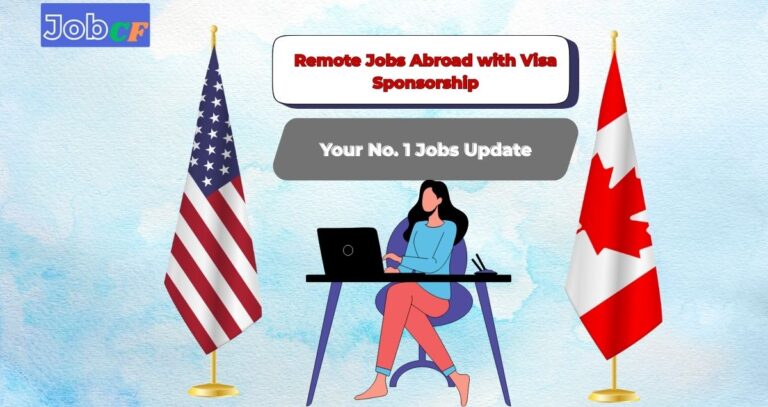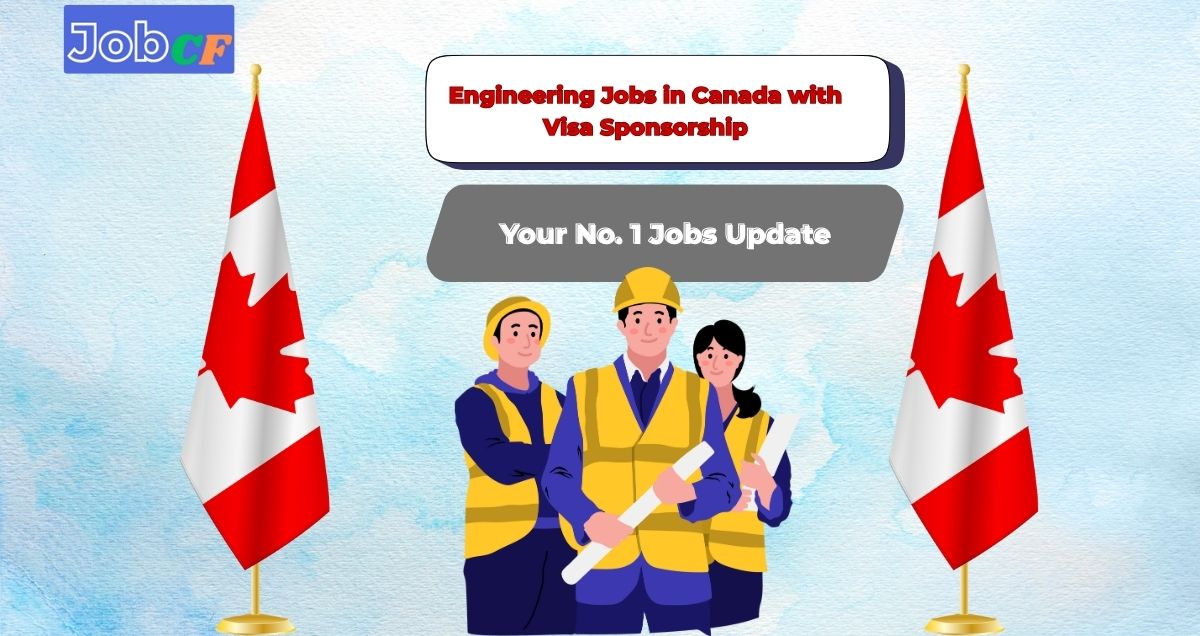
Canada is actively welcoming foreign talent in its growing engineering sectors, offering excellent job opportunities with visa sponsorship. For qualified engineers outside Canada, this is a clear path to build a successful life and career in a country known for stability, innovation, and high-quality living.
This guide breaks down how to get an engineering job in Canada with visa sponsorship, the steps involved, top provinces hiring, and how to position yourself for success.
Opportunities for Engineers in Canada
Engineering remains one of the most in-demand fields across Canada. The country is investing heavily in infrastructure, clean energy, housing, and digital transformation, which has created strong demand for both local and international engineering professionals.
For example, Canada’s Job Bank consistently lists thousands of openings in civil, electrical, software, and mechanical engineering. Recent reports show that provinces like Ontario, British Columbia, and Alberta are leading the demand due to large-scale public and private sector projects.
These provinces offer the best chances for international applicants looking for engineering jobs in Canada with visa sponsorship, especially those with technical skills aligned to NOC codes for engineering jobs in Canada.
Key roles in demand include:
- Software Engineers
- Civil Engineers
- Mechanical Engineers
- Electrical Engineers
- Chemical Engineers
Companies in these regions are open to foreign applications and regularly sponsor eligible professionals who meet the required skill sets and job profiles.
What Are the Top Engineering Disciplines with Visa Sponsorship?
If you’re targeting Canada for work, it’s important to know which engineering roles are getting sponsored.
Here are the top disciplines currently seeing demand:
- Software Engineer Jobs in Canada with Visa Sponsorship
Canadian tech companies are constantly hiring backend, frontend, and full-stack developers. Roles in AI, cloud computing, and cybersecurity are especially valuable. - Mechanical Engineer Jobs in Canada with Visa Sponsorship
Industries like manufacturing, automotive, and industrial design rely on mechanical engineers for equipment design and process optimization. - Civil Engineer Jobs in Canada with Visa Sponsorship
From roads to bridges and housing developments, civil engineers are crucial for Canada’s infrastructure boom. - Electrical Engineer Jobs in Canada with Visa Sponsorship
Power utilities, electronics firms, and construction companies all need licensed electrical engineers for project design and system maintenance. - Chemical Engineer Jobs in Canada with Visa Sponsorship
These roles support pharmaceutical, energy, and environmental sectors—especially in Alberta and Quebec.
All of these roles fall under specific NOC codes for engineering jobs in Canada, which help determine your eligibility for visa pathways like Express Entry or PNP.
Which Provinces Offer the Best Opportunities for Engineers?
Not all regions offer the same level of opportunity. If you’re applying as a foreign engineer, it makes sense to target provinces with high demand and active visa sponsorship for engineers in Canada.
Ontario: Home to Toronto’s booming tech sector and infrastructure projects. Many multinational companies operate here.
British Columbia: Vancouver’s growth has made this province a hotbed for engineers, especially in civil, electrical, and software fields.
Alberta: Known for its oil and gas industry, Alberta still requires engineers for project planning, environmental assessments, and industrial systems.
Several of these provinces offer specialized streams under the Provincial Nominee Program for engineers, which makes getting a work permit process for engineers in Canada more straightforward.
There are also inspiring success stories of engineers who relocated through these programs and now thrive in Canada with stable, high-paying roles.
Read More: Engineering Jobs in UK with Visa Sponsorship: A Global Career
Step-by-Step Guide to Securing an Engineering Job with Visa Sponsorship
Getting an engineering job in Canada as a foreign professional can feel complex, but the process is structured and achievable.
Here’s a breakdown of what to do:
1. Research Job Openings
Start by identifying companies actively offering visa sponsorship for engineers in Canada. Use trusted platforms like Job Bank, Indeed, and company career pages.
2. Prepare a Canadian-Style CV
Your resume should match Canadian standards—concise, skills-focused, and tailored to each job.
(See CV tips in the section below.)
3. Apply Through the Right Visa Pathway
There are multiple options for skilled engineers:
- Express Entry for Engineers Seeking Jobs in Canada
- Provincial Nominee Program for Engineers
- Canadian Experience Class for Engineers (for those who studied/worked in Canada)
- Some roles may also require LMIA (Labour Market Impact Assessment)
Understanding LMIA for engineering jobs in Canada helps you know whether an employer can support your sponsorship.
4. Target Top Companies Offering Visa Sponsorship
Research the top 10 companies hiring engineers with visa sponsorship in Canada. Companies like SNC-Lavalin, Bombardier, and WSP Global often recruit internationally.
5. Network Actively
Use platforms like LinkedIn, join engineering forums, and attend virtual career events. Networking strategies for engineering jobs with visa sponsorship in Canada can greatly increase your chances of getting noticed.
How to Find Engineering Jobs in Canada with Visa Sponsorship
Here are reliable platforms to start your job search:
- Job Bank Canada – Official government listings with visa sponsorship tags.
- Indeed & Workopolis – Great for filtering jobs by NOC codes and sponsorship availability.
- LinkedIn – Build a strong profile and directly message hiring managers in target companies.
Look out for posts that mention sponsorship or international hiring. You can also filter based on job titles like “civil engineer jobs in Canada with visa sponsorship” or “software engineer visa jobs.”
Knowing how to apply for engineering jobs in Canada as a foreigner begins with finding these relevant postings consistently.
How to Write a CV for Engineering Jobs in Canada
Writing a compelling CV is key to getting shortlisted.
Here’s what to include:
- Relevant job titles and responsibilities
- Measurable achievements (e.g., improved system efficiency by 20%)
- Technical skills like CAD, MATLAB, Python, etc.
- Certifications like PMP or P.Eng (if available)
- Language proficiency (IELTS scores if applicable)
Use formatting that fits Canadian resume norms: no photos, clear job titles, and no more than 2 pages. Candidates who understand experience requirements for visa-sponsored engineering jobs in Canada and show this in their CV stand out quickly.
The Visa and Work Permit Process for Engineers
Foreign engineers interested in Canada must understand the steps involved in obtaining legal work authorization. There are several visa pathways tailored for skilled professionals, and choosing the right one depends on your background and job offer.
Work Permit Process for Engineers in Canada
Most engineering roles require either:
- Employer-Specific Work Permits, supported by an LMIA (Labour Market Impact Assessment)
- Or access through immigration programs like:
- Express Entry for Engineers Seeking Jobs in Canada
- Provincial Nominee Program for Engineers
- Canadian Experience Class for Engineers
Each program has unique entry requirements. For example, Express Entry is points-based and considers your education, work experience, and language ability.
The work permit process for engineers in Canada can take a few weeks to months, depending on your country and program. Timely submission of required documents like education assessments, reference letters, and language test results (IELTS, TEF) is crucial.
What Are the Requirements for Visa-Sponsored Engineering Jobs?
To qualify for visa sponsorship for engineers in Canada, applicants must meet the following requirements:
- Education: A bachelor’s or master’s degree in engineering from a recognized institution.
- Professional Certification: In some cases, licensing through a provincial engineering association (e.g., PEO, APEGA) is required.
- Language Proficiency: English or French test results, depending on the province.
- Experience: Employers often expect 2–5 years of relevant work experience.
- Soft Skills: Strong communication, teamwork, and project management skills are important for workplace integration.
Applicants should use this list as a checklist when applying. Meeting these requirements for visa-sponsored engineering jobs in Canada makes you more competitive in the hiring process.
Common Mistakes to Avoid When Applying for Visa-Sponsored Jobs
Many qualified engineers miss out on opportunities due to avoidable errors. Here are common mistakes and how to avoid them:
- Incomplete Applications: Always include your resume, cover letter, credentials, and language test scores.
- Ignoring LMIA Requirements: If a job offer requires LMIA, ensure the employer is eligible and willing to support.
- Generic CVs: Applications that are not tailored to specific job descriptions tend to be overlooked.
- Weak Networking: Relying solely on job boards without using networking strategies for engineering jobs with visa sponsorship in Canada limits visibility.
An engineer from Nigeria once shared how his first two applications were rejected due to not aligning with job descriptions. Once he tailored his resume and added his IELTS results, he got shortlisted within two weeks. Simple changes can make a big difference.
Interview Tips for Engineering Jobs in Canada with Visa Sponsorship
Here’s what to expect in most engineering interviews:
- Technical Assessments: You may be asked to solve real-world problems or complete a task using tools like AutoCAD or MATLAB.
- Behavioral Questions: Employers want to assess teamwork, leadership, and adaptability.
- Visa Readiness: Be prepared to answer questions about your ability to relocate, availability, and immigration status.
Tips for success:
- Practice common engineering case scenarios.
- Speak clearly about your role in past projects.
- Mention that you understand visa processes and can handle your part of documentation.
These interview tips for engineering jobs in Canada with visa sponsorship can help you feel more confident and stand out from other international candidates.
Salary for Engineers with Visa Sponsorship in Canada
Salaries in engineering roles vary based on experience, specialization, and location.
Here’s a general overview:
| Role | Average Annual Salary (CAD) |
| Software Engineer | $85,000 – $120,000 |
| Civil Engineer | $70,000 – $95,000 |
| Electrical Engineer | $75,000 – $100,000 |
| Mechanical Engineer | $72,000 – $98,000 |
| Chemical Engineer | $78,000 – $105,000 |
These figures reflect roles offering visa sponsorship for engineers in Canada, particularly in major provinces like Ontario and British Columbia.
Note that engineers may also receive relocation support, bonuses, or housing allowances depending on the employer.
Why Canada Is the Ideal Destination for Engineers
Canada consistently ranks high for job satisfaction, work-life balance, and quality of life. For engineers, the appeal goes beyond salaries.
The country has a strong economy, active immigration programs, and a supportive environment for skilled workers. Engineers who relocate to Canada often report job stability, access to healthcare, and opportunities for their families.
Programs like the Express Entry for engineers seeking jobs in Canada ensure smooth relocation with permanent residence options. Several foreign engineers have shared how they started on a work permit and became permanent residents within two years.
With engineering demand projected to grow over the next decade, Canada continues to stand out as a top destination for technical professionals worldwide.
Conclusion
Finding engineering jobs in Canada with visa sponsorship is not just possible—it’s achievable with the right strategy.
Start by:
- Targeting the right provinces and companies
- Tailoring your CV and application
- Understanding the visa options for engineers moving to Canada
- Staying consistent with your search and improving your profile
You’ve already taken the first step by researching. Now, begin your application journey confidently—like many others who are now settled and thriving in their engineering careers in Canada.

